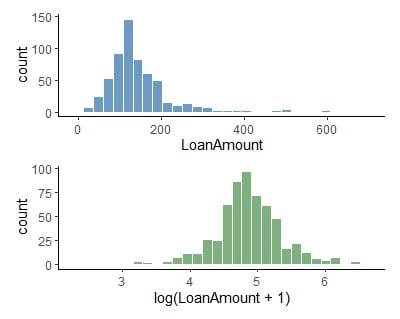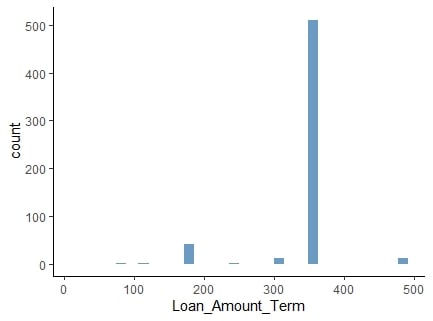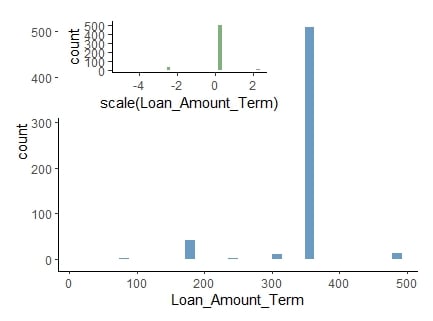Why transform existing features?
Feature Engineering in R

Jorge Zazueta
Research Professor. Head of the Modeling Group at the School of Economics, UASLP
Making your model's life easier
We can improve the performance of our machine-learning model by making the data more manageable.
glimpse(loans_num)
Rows: 614
Columns: 6
$ Loan_Status <fct> Y, N, Y, Y, Y, Y, Y, N, Y, N, Y, Y, Y, N...
$ ApplicantIncome <dbl> 5849, 4583, 3000, 2583, 6000, 5417, 233...
$ CoapplicantIncome <dbl> 0, 1508, 0, 2358, 0, 4196, 1516, 2504, 1...
$ LoanAmount <dbl> NA, 128, 66, 120, 141, 267, 95, 158, 168...
$ Loan_Amount_Term <dbl> 360, 360, 360, 360, 360, 360, 360, 360, ...
$ Credit_History <fct> 1, 1, 1, 1, 1, 1, 1, 0, 1, 1, 1, 1, 1, 1...
Log transformation
log-transform numerical features to:
- Handle skewed data
- Reduce the impact of outliers
- Convert multiplicative relations into additive
- Make the data more suitable for modeling
- Works only for positive values
log-transformed loan amount data

Normalization
Normalize or scale numerical features to:
- Prevent one feature from dominating the others
- Ease interpretation because it gives a comparable magnitude and
- Make the data more suitable for modeling
e.g., loan amount term values shown vary significantly

Normalization
Normalize or scale numerical features to:
- Prevent one feature from dominating the others
- Help handle outliers and
- Missing data
- Make the data more suitable for modeling
Normalized values preserve distribution, but contain variation.

Defining the model and the recipe
We can now declare a logistic regression model and add a recipe to impute, normalize and log-transform the relevant features.
lr_model <- logistic_reg()
lr_recipe <-
recipe(Loan_Status ~.,
data = train) %>%
step_impute_knn(
all_numeric_predictors())%>%
step_normalize(Loan_Amount_Term) %>%
step_log(all_numeric_predictors(),
-Loan_Amount_Term, offset = 1)
Printing the recipe object shows a summary of the steps applied.
lr_recipe
Recipe
Inputs:
role #variables
outcome 1
predictor 5
Operations:
K-nearest neighbor imputation for all_numeric_predictors()
Centering and scaling for Loan_Amount_Term
Log transformation on all_numeric_predictors(),-Loan_Amount_Term
Measuring performance efficiently
We define a set of metrics, roc_auc, accuracy and sens to assess the fit workflow object lr_fit.
class_evaluate <- metric_set(
roc_auc, accuracy, sens)
And run it as you would any function.
lr_aug %>%
class_evaluate(
truth = Loan_Status,
estimate = .pred_class,
.pred_Y)
Customized set of metrics
# A tibble: 3 × 3
.metric .estimator .estimate
<chr> <chr> <dbl>
1 accuracy binary 0.813
2 sens binary 0.467
3 roc_auc binary 0.288
Let's practice!
Feature Engineering in R

